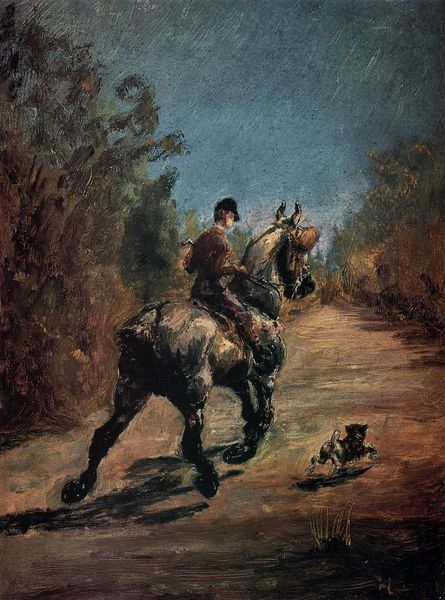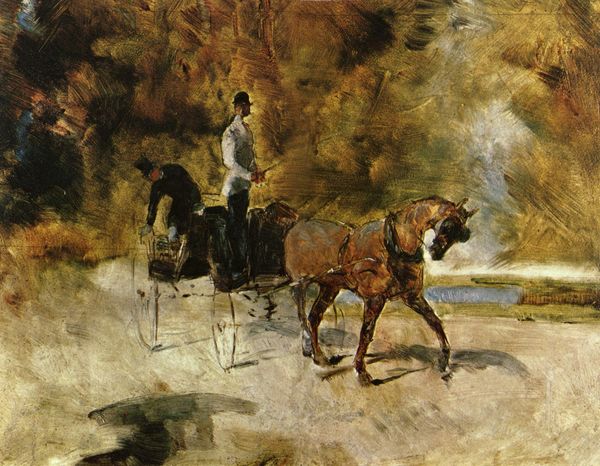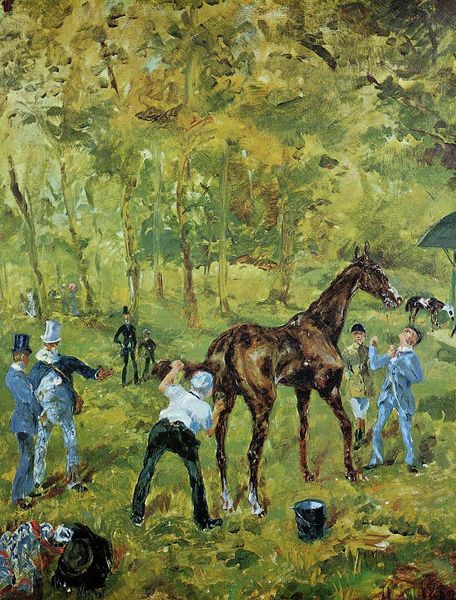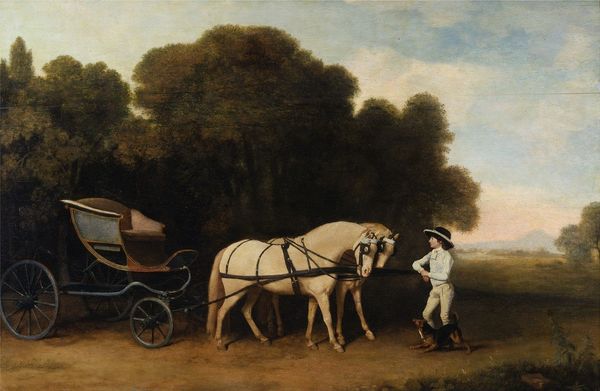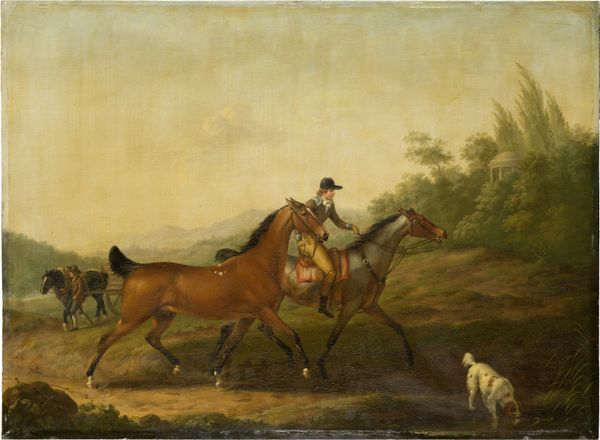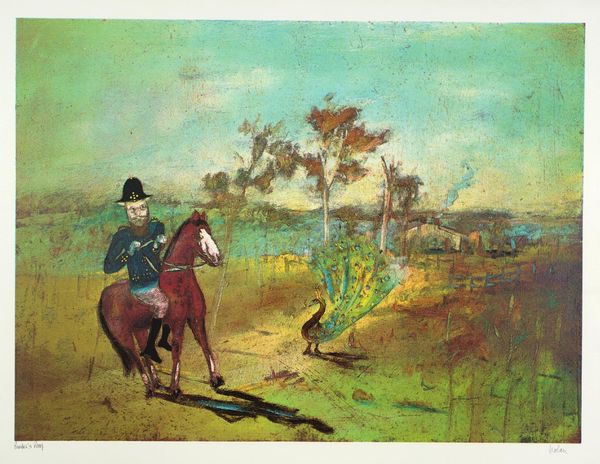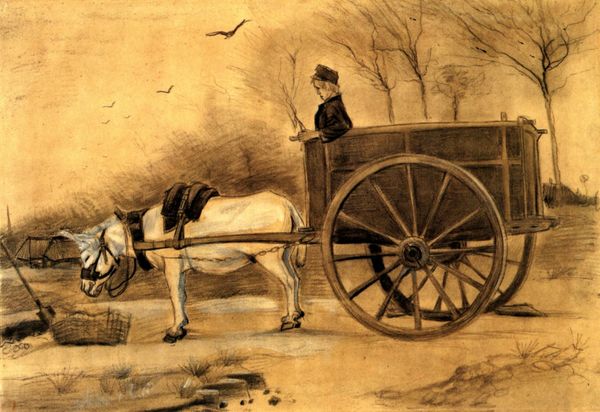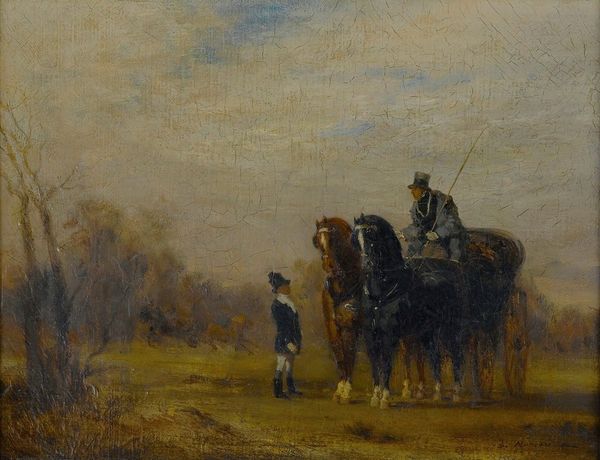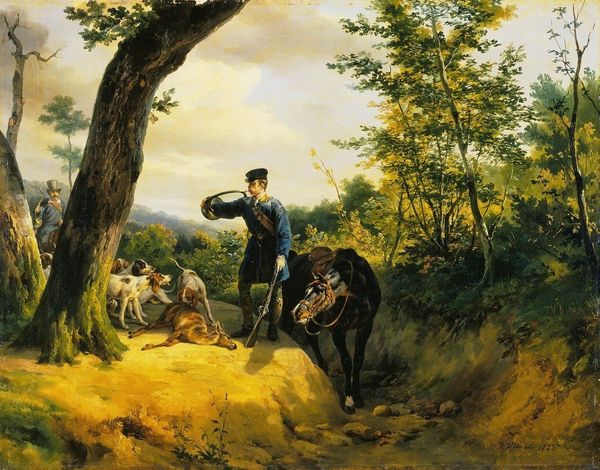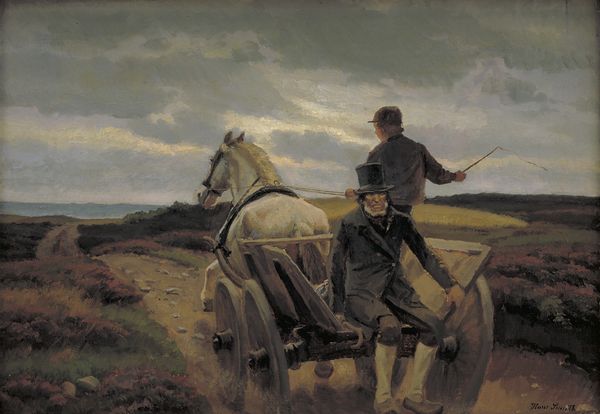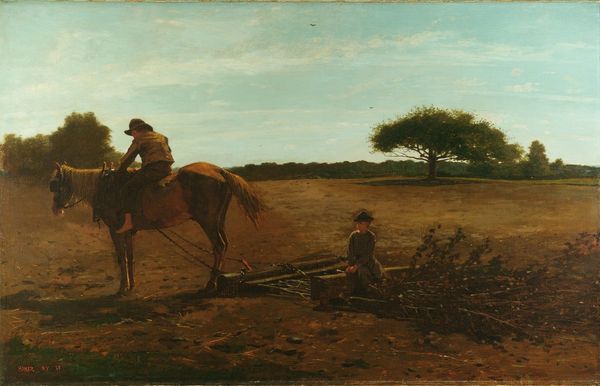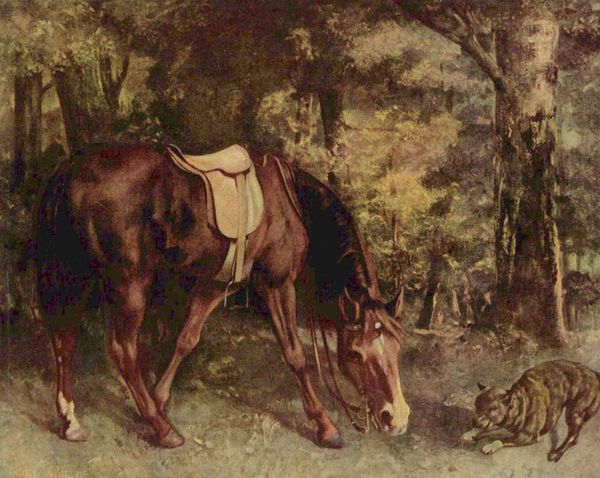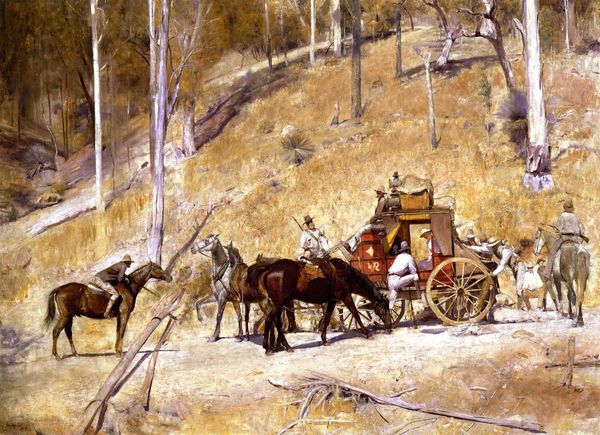
painting, oil-paint
#
portrait
#
figurative
#
painting
#
impressionism
#
oil-paint
#
landscape
#
oil painting
#
genre-painting
Copyright: Public Domain: Artvee
Editor: Here we have "The Trap" by Henri de Toulouse-Lautrec, an oil painting from 1880. The rough brushstrokes give the scene an unfinished quality, and it depicts figures seemingly caught in a hazy landscape. What do you see in this piece, beyond the initial Impressionistic style? Curator: I see a microcosm of social dynamics encoded within this landscape. Consider the title, "The Trap." It isn't just about being physically stuck, but hints at the societal traps for the figures depicted, especially within the context of 19th-century gender and class constraints. The women are confined within a rigid, constructed space, and dependent on male provision or protection. Editor: That's fascinating, I was focused on the composition. It seems that the driver on the side has left the woman on the carriage, I wonder why? Curator: Precisely! Consider the gaze of the woman in the carriage; does she appear in control of her circumstance or trapped by societal expectations? The isolation and their relationships may speak to the era’s treatment of women who wanted to venture outside. The landscape almost imprisons her with its rapid strokes as though time passes rapidly. Where does the painter lie in all this? What does it all convey? Editor: It definitely reframes the piece. I hadn't thought about the gaze, I appreciate that so many stories can be read with an intention of activism. It’s no longer just a pretty painting but a commentary. Curator: It challenges us to reflect on how those structures of power continue to influence the present, and to challenge what traps us today. Understanding this context enriches the art appreciation so we don't get "trapped" by passive viewing.
Comments
No comments
Be the first to comment and join the conversation on the ultimate creative platform.
